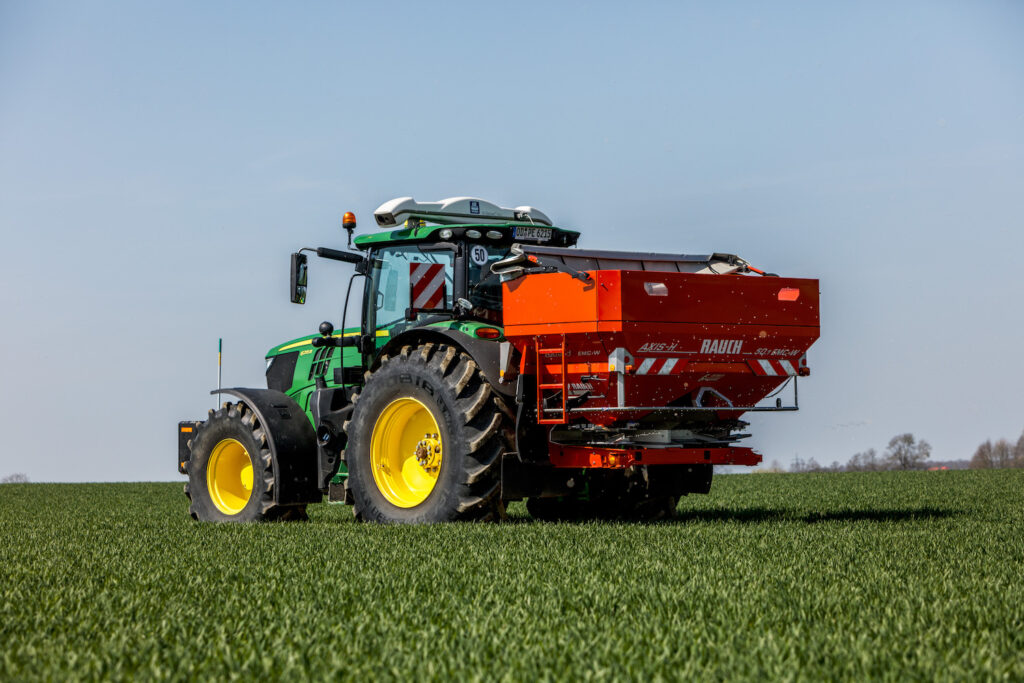What can we learn from 2022 crop trials?
30th January 2023
2022’s floods, storms, drought and the volatile grain market shook the industry, but as 2023 gets underway, Natalie Wood, agronomy operations manager at Yara, discusses the findings from last years’ trials.
- Sulphur – the all-important sidekick
The winter wheat trial compared an ammonium nitrate fertiliser (YaraBela EXTRAN) with a nitrogen and sulphur fertiliser (YaraBela AXAN). The sulphur product delivered a 0.3 tonnes per hectare yield increase. The same increase occurred on the same site when comparing urea versus urea with sulphur. “Vitally, sulphur boosts nitrogen use efficiency,” Natalie explains.
Of course, Yara is in the same boat as farmers when it comes to the weather, so it carries out its trials over several years to get an average. “One year we saw a difference of 1.4 tonnes per hectare, which is an amazing response. Yes, it’s an outlier, but it goes to show that some sites will be that responsive.” Natalie adds, “Nitrogen’s not cheap, but by having the sulphur there with it, you will ensure you’re going to make the most of it.”
- Nitrogen – can a result be too good?
Yara’s research on nitrogen stretches back nearly 50 years, and every year new trials add to their findings.
“The long range is so useful because we can look back and find a year with similar conditions and work out what to expect as the optimum for this year, taking into account the price,” Natalie says.
But some of Yara’s 2022 research considers a newer iteration of nitrogen: foliar nitrogen. There’s been a buzz around the topic over the past couple of years, so it was an important focus in 2022.
The foliar nitrogen dose response trial
- Wheat was treated with 60kg of straight N followed by 40kg
- Next it was treated with a 300g/l foliar nitrogen fertiliser (YaraVita Safe-N) – one application at growth stage 37 and another at growth stage 45.
“This is the second year that we’ve done this trial,” Natalie says. “There was some variation between 2021 and 2022 but the key message was that the nitrogen use efficiency was much too high – it was at 120%. At 100% and above, what’s happening is you’ve started to mine the inherent soil fertility.”
Natalie emphasises growers should be careful with that risk. “Farmers have spent recent years focusing on building soil fertility, and foliar nitrogen can deplete in one year what’s been built up in several.”
Natalie then went on to highlight another potential issue with foliar nitrogen when it comes to protein levels. “In grain analysis, we found a significant drop in the protein levels from that foliar application, suggesting foliar nitrogen probably isn’t the right product if protein is your goal.”
- Micronutrients – part of a powerful mix
Yara have various trials running on their micronutrient fertiliser range – YaraVita. “In a potato trial, we looked at the effects of combining micronutrients and biostimulants. We know they can make a slight difference on their own, but wanted to see what they can do when paired together.”
The trial compared a control, with YaraVita MAGPHOS K (a liquid fertiliser containing phosphate, potash and magnesium), and YaraVita MAGPHOS K plus a biostimulant. The results were compelling.
Adding MAGPHOS K increased the marketable yield by 4 tonnes per hectare. Adding both MAGPHOS K and the bio stimulant increased yields by a further 4 tonnes per hectare, creating a huge 8-tonne difference compared to the control.
Natalie acknowledges that many potato growers really suffered in 2022, but it seems this trial avoided the worst of the issues. “These are certainly some very encouraging results, but this is the first year of this particular trial, so naturally we’ll run some more trials on it to make sure the data’s robust.”
Natalie’s three key takeaways for farmers
- Foliar nitrogen isn’t a magic wand:“There are good stories out there, but make sure you don’t take too much from your soil. Keep on top of monitoring, and be mindful about protein.”
- What’s your switch strategy:“If you’re switching to a new variety, bear in mind that different varieties can have different nitrogen use efficiency.”
- Do your own trials on your own farm:“If you’re deliberating over biostimulants or micronutrient mixtures, set up your own trial. It’s the perfect way to test your options whilst adding minimal risk into your strategy. In addition, zero-nitrogen plots are a good way of monitoring nitrogen and mineralisation on your own fields.”

